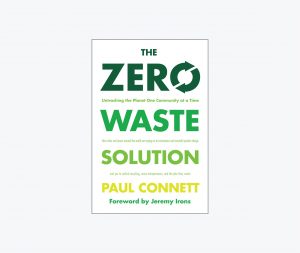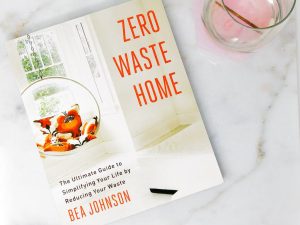With the advent of the industrial revolution, in particular, our capacity to take, make, and dispose has grown exponentially, and in the years since, this trajectory has continued. However, there is hope, and as our awareness of the impact of that waste grows, growing movements towards changing our perspectives and habits are gaining popularity. The zero waste movement, of course, is just one of them, however, its unique history and affinity to tradition have made it particularly compelling to many people.
But who started the zero waste movement? And what is the history of the zero waste concept? Here, we take a look at how the zero waste movement began and how waste-free living can be adopted by anyone.
When did zero waste start? An ancient history of reduce, reuse, recycle
 The zero waste concept is not new. In fact, any ancient or pre-modern civilization, tribe, or village would immediately recognize the concept of zero waste, or rather, would wonder exactly when our wasteful practices became the norm. Grandparents and parents likely remember a time when they returned milk bottles to the store, or used reusable bags, containers, and jars in the kitchen and at the grocery store.
The zero waste concept is not new. In fact, any ancient or pre-modern civilization, tribe, or village would immediately recognize the concept of zero waste, or rather, would wonder exactly when our wasteful practices became the norm. Grandparents and parents likely remember a time when they returned milk bottles to the store, or used reusable bags, containers, and jars in the kitchen and at the grocery store.
Many of the foundational concepts behind the zero waste movement can be traced back centuries, if not millennia. However, there are some notable differences and developments that have ensured the zero waste concept is suited to our modern levels of consumption and our growing populations, and while it is difficult to pinpoint exactly who started the zero waste movement and when, there are a number of big players and influential individuals who have helped push the movement into the mainstream.
A brief history of the zero waste movement
Zero waste is tied to recycling and while this is seen as a last resort for modern Zero Wasters, it’s probably fair to say that without a resurgent interest in recycling, we wouldn’t be where we are now. Today, adherents try to focus on waste prevention as opposed to end-of-life waste management. However, recycling remains an integral part of the zero waste concept.

Source: happyhollowglass
Recycling practices can be traced back to the dawn of civilization, however, it wasn’t until the 1970s that serious investment was made in an industry that saw potential energy and cost savings in reclaimed materials such as aluminum. This, along with fast-growing ecological movements and the inception of Earth Day in 1970, kickstarted a movement towards reassessing the concept of waste entirely.
Of course, all of this happened long before single-use plastics became ubiquitous, and at that time, incinerators (or “energy recovery” facilities) were seen as a viable way to reduce landfill waste. Since that time, and with decades of study and analysis, climate change has finally become a recognized issue, and the zero waste movement has made great leaps away from incineration of solid waste to focus on the environmental impact of every part of the production and consumption paradigm—pushing forward circularity and highlighting wasteful practices such as the “single-use” phenomena.
The zero waste story really begins in the 1980s, gathering pace over the past 40 years to become what it is today. Take a look at our abridged timeline for zero waste sourced from the excellent The Zero Waste Solution: Untrashing the Planet One Community at a Time by Paul Connet.
The 1980s – Urban Ore and Total Recycling

Source: gallivant
Perhaps the first mention of the term “zero waste” comes from Daniel Knapp’s concept of Total Recycling. Knapp and his wife founded salvaging operation and market, Urban Ore, in Berkeley, California in the 1980s, and from this real-world experiment, they showed how all types of waste could be diverted from landfill and reused within the community. Its success is still evident today, and Urban Ore estimates that it diverts more than 8,000 tons of waste away from landfill each year.
At the same time, municipalities across the US were adopting composting, recycling and waste diversion programs and goals, while other organizations such as the National Coalition Against Mass Burn Incineration and Safe Alternatives and the Sound Resource Management Group also began to campaign and analyze waste and waste management practices in the US.
The 1990s – No Waste and GRRN
 With Urban Ore gaining popularity in the community, Daniel Knapp set about spreading his Total Recycling concept further afield, and by 1995 its influence had spread as far as Canberra, Australia. Knapp shared news of the Australian Capital Territory’s “No Waste by 2010”, becoming the first program of its kind in the world. That same year, Lynn Landes set up the Zero Waste USA website aimed at changing waste habits on an individual level, and the GrassRoots Recycling Network (GRRN) was also started by Bill Sheehan.
With Urban Ore gaining popularity in the community, Daniel Knapp set about spreading his Total Recycling concept further afield, and by 1995 its influence had spread as far as Canberra, Australia. Knapp shared news of the Australian Capital Territory’s “No Waste by 2010”, becoming the first program of its kind in the world. That same year, Lynn Landes set up the Zero Waste USA website aimed at changing waste habits on an individual level, and the GrassRoots Recycling Network (GRRN) was also started by Bill Sheehan.
By the end of the decade, the zero waste concept had taken hold, and working with Bill Sheehan and the GRRN, Georgia Senator Donzella James introduced the first zero-waste legislation in the US, setting the goal of zero waste by 2020 in the state. As the millennium arrived, the zero waste concept had made it into Time magazine in Ivan Amato’s article, Can We Make Garbage Disappear?.
The Millennium – The Zero Waste International Alliance

Source: zwia
Over the course of the next decade, the zero waste concept gathered pace, and an increasing number of individuals, organizations, and governments begin to flesh out the framework and lay out a path to achieving it. In 2001, the first Zero Waste International Alliance (ZWIA) summit was proposed, and while the reception was positive, funding the event in New Zealand proved difficult.
However, by 2004, the GRRN had adopted the zero waste business principles developed by Gary Liss, which were then subsequently adopted by the ZWIA. By this time, there had been two ZWIA dialogues in the US, and in that same year, more than 300 representatives from around the world attended the third ZWIA dialogue in San Francisco.
The 2010s — The Zero Waste Lifestyle

Source: zerowastehome
In the second decade of the new millennium, the zero waste concept had moved out of the hands of experts, policymakers, and environmentalists and into the mainstream. Bea Johnson, a French-American woman living in California, is widely credited with beginning the zero-waste lifestyle movement, starting small with her family of four and sharing the journey on her blog Zero Waste Home.
In 2010, she was featured in the New York Times, and in 2013 she had published the book Zero Waste Home: The Ultimate Guide to Simplifying your Life by Reducing your Waste which featured her methodology of the 5Rs (an extended version of reduce, reuse, recycle). Its importance in promoting behavioral changes on an individual level should not be underestimated, and her zero-waste plan has reached millions of people around the world.
Today – Mason Jars and Zero Waste Products

Source: zerowastehome
Today, many people familiar with the zero waste concept and lifestyle movement are probably also familiar with the mason jar challenge started by blogger Lauren Singer. As a follower of Bea Johnson, and as part of her Trash is for Tossers blog and her social media presence, Singer has helped push the zero waste concept into the consciousness of Millennials and other young people. The challenge is simple: fit all of your unrecyclable waste into a jar over the course of a year and keep reducing it wherever you can. For anyone going zero waste, this simple yet engaging challenge is helping highlight the possibilities of zero waste and the difficulties faced by the zero waste community in our consumer-oriented society.
In the US, and in many other countries around the world, this hard work has led to mainstream changes. Now, everything from packaging through cosmetics to food has a zero waste alternative, with package free and reusable products fast becoming available in both specialist stores and supermarkets across the US.
So, if you’re looking for an easy answer to the question of who started the zero waste movement, the answer is not quite so simple. However, with more than 50 years of work towards zero waste, and with countless organizations, political movements, laws, legislation, and of course, zero-waste blogs leading the way, it’s fair to say we are finally moving in the right direction.
For more information on the zero waste movement, the foundational concepts, and how your business can go zero waste, subscribe to the zerowaste.com newsletter or contact one of our TRUE Advisors. We’re comitted to ensuring the zero waste movement continues to move forward, and we’re happy to advise you and your business on how you can help and why everyone benefits from a waste-free world.

